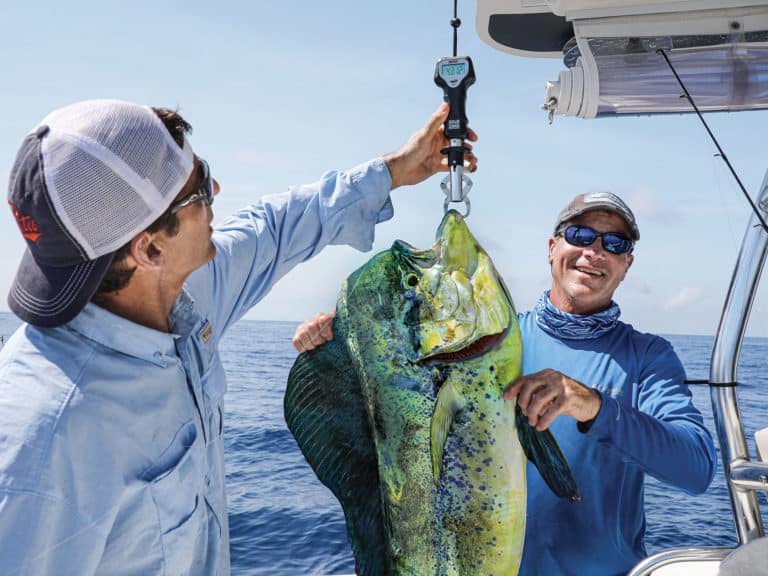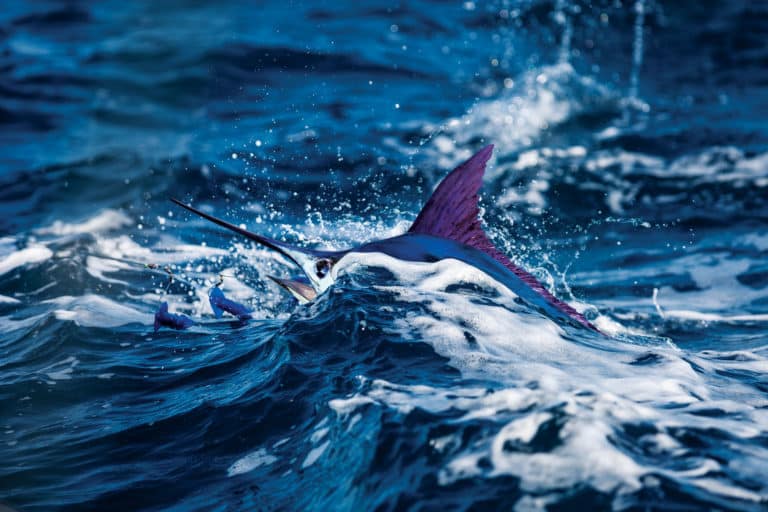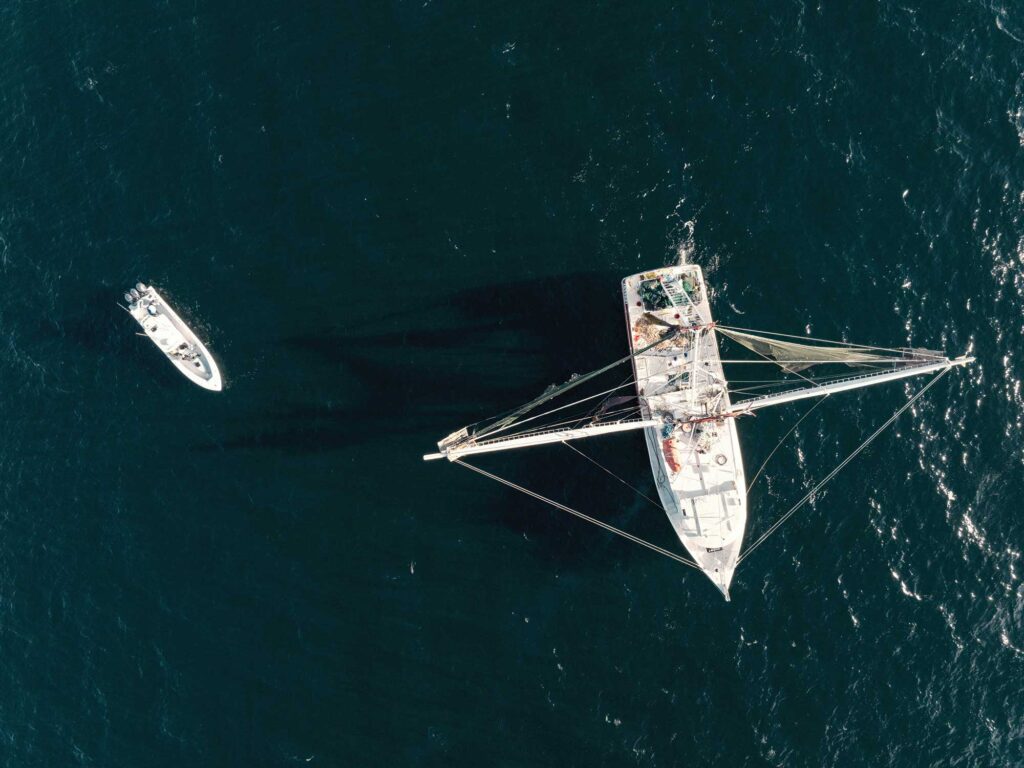
Shrimp boats provide fish of all varieties with an all-you-can-eat buffet of discarded bycatch. Often you can find plenty of school blackfins or yellowfins ready to inhale a popper or slam a jig fished just behind the trawler. Capt. Kurt Tillman made this the first stop after we departed from his slip in Dauphin Island, Alabama. After a commute of about 80 miles, we started working the waters directly behind a trawler with 8-inch-long No Live Bait Needed straight tails rigged on jig heads. With each cast, our jigs were inhaled by sharks, hitting them almost instantly. But we failed to hook any tuna, eventually moving on in search of greener pastures and our original targets.
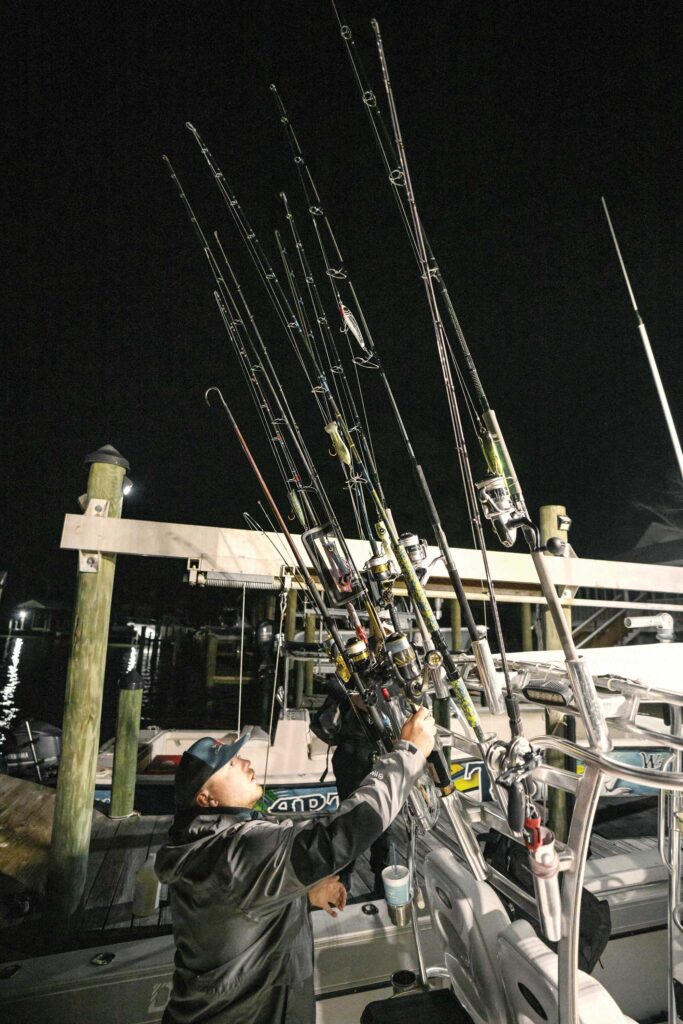
You never know what the hot bait will be, so we came prepared with a wide variety of tackle. We left port with a full quiver of rods set up to jig, pop and troll. With tuna, switching techniques quickly is sometimes necessary. We all prefer the fast action provided by jigging and popping, so the majority of rods were 8-foot Ocean Devil spinners fitted with Daiwa Saltiga, Daiwa BG MQ, Shimano Twin Power or Shimano Saragosa reels. The combos were rigged with 50- to 80-pound-test braid and 4 or 5 feet of 80- to 100-pound fluoro.
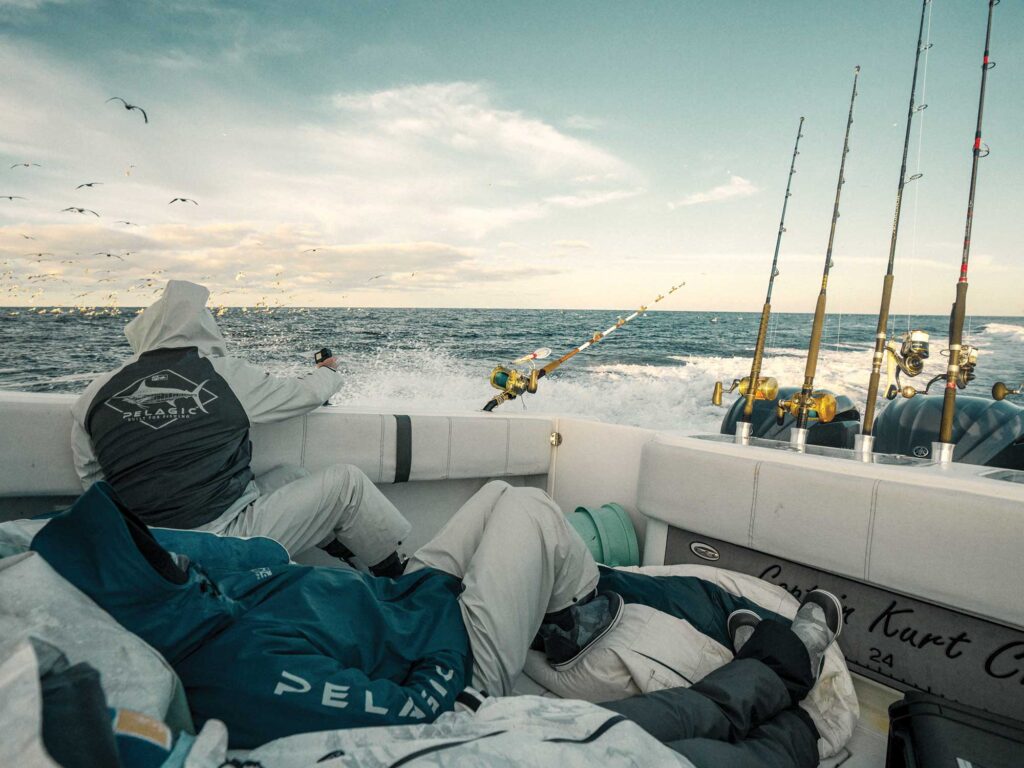
Our commute was 80 to 120 miles off of Alabama, so we settled in for the long ride. After a 4:30 a.m. departure, a little rest on the way out was just what we needed. Seas were reasonable, and rest came easy in the aft beanbags. Part of the goal of the trip was to test out Pelagic’s line of foul-weather gear, the Chubasco series of jackets and bibs. A few hours of salt spray and chilling winds were welcome. The crew relaxed, but the excitement was palpable. We had ventured to this area last year and done well on giant yellowfins and bigeyes. Anticipation was high as we steamed south.
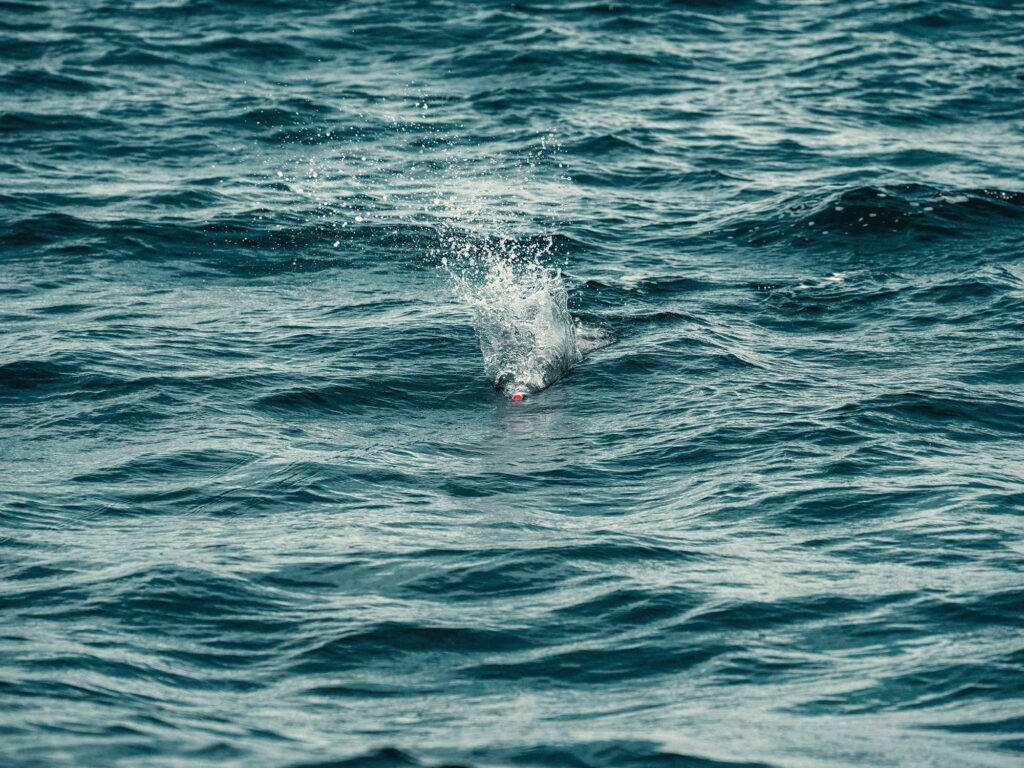
On previous trips out of Dauphin Island to the Midnight Lump and Horseshoe areas, poppers made by Black Ledge Lures were the hot ticket. But try as we may, we couldn’t raise a bite on top. This year has been difficult with weather; it’s been tough to get offshore. Perhaps the surface disruption caused by the strong winds pushed the fish down, as our hookups occurred around the 150-foot depths. Eight-inch No Live Bait Needed straight tails in white rigged on jig heads got the job done this trip, taking yellowfins to about 150 pounds.
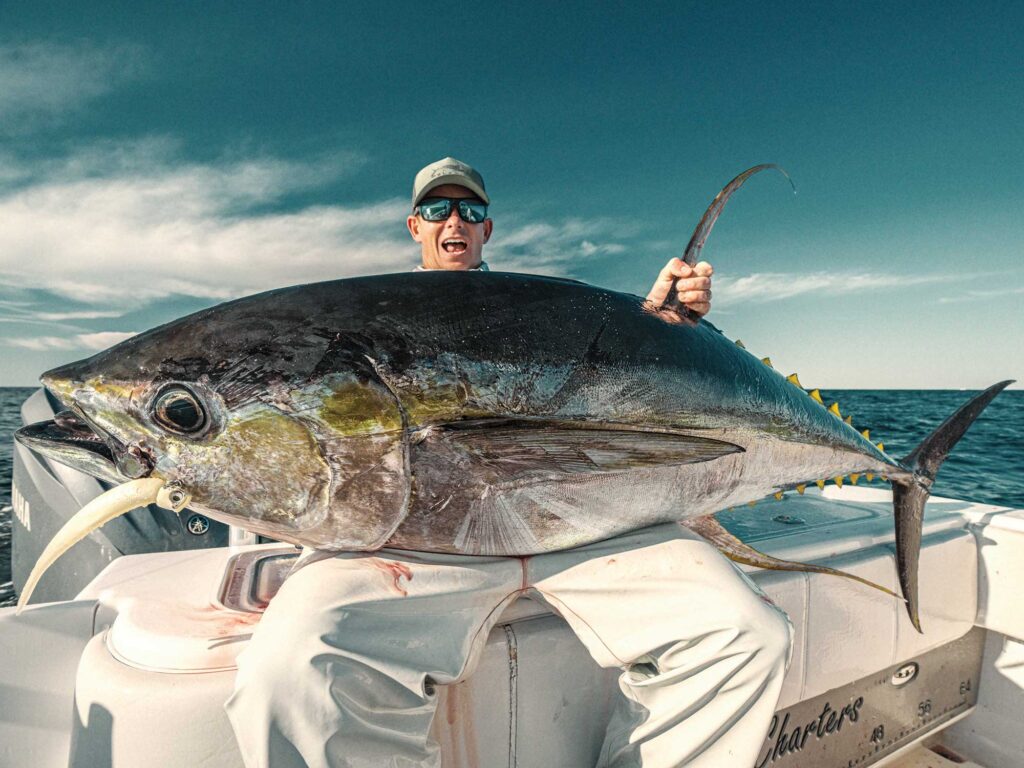
It’s hard to drop a pin on fish that cover as much ground as the members of the tuna clan. But the fertile waters of the Gulf of Mexico are a good place to start looking. Here, you will find yellowfins, blackfins, and even the occasional bigeye or bluefin. Ridges, canyons, lumps and seamounts attract and hold bait that lure in a wide variety of predators, including blue marlin, swordfish, wahoo, and a good chunk of the tuna family. Then there are the deepwater platforms, such as massive oil rigs, that float on top but attract tuna equally well. The areas known as the Midnight Lump and the Horseshoe are perennial angler favorites, holding good numbers of tuna and other pelagics. On this trip, the Horseshoe, so named because of its position surrounding the Viosca Knoll, was the most productive.
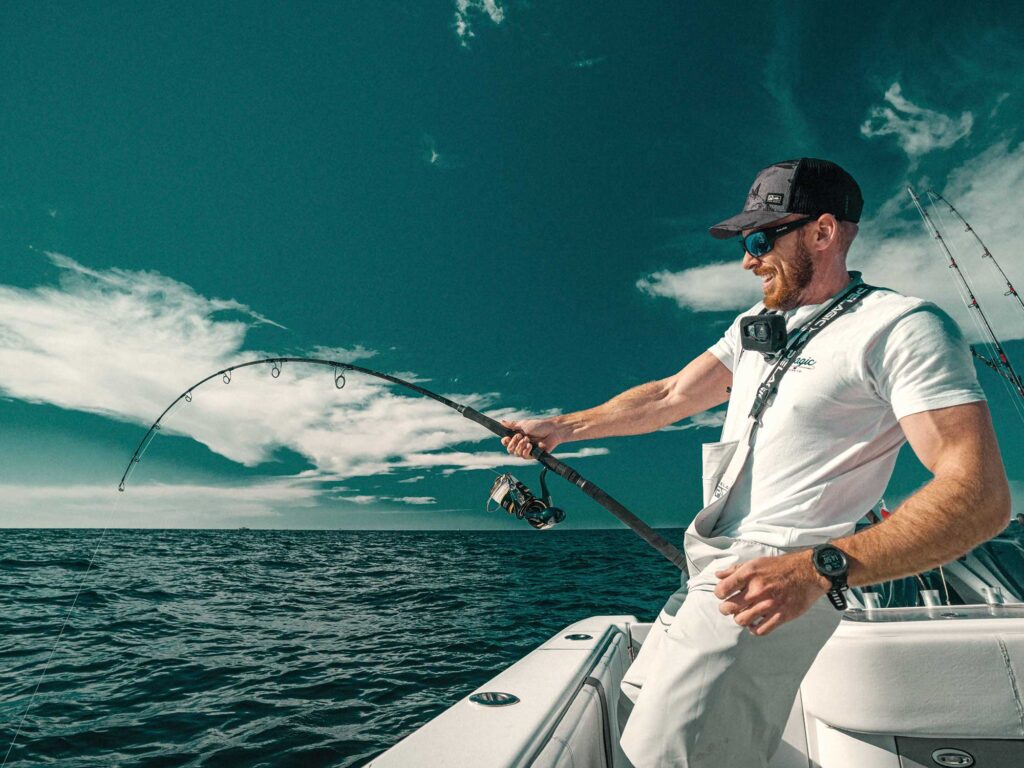
Big fish fight hard. You can usually tell what’s pulling on your line by its behavior, but some fish still leave you guessing. Is it bulldogging straight down? Lurching skyward? Making tight circles? These are the hints that give away your unseen foe. When I hooked a 150-pound-class yellowfin about 150 feet deep, its identity wasn’t obvious. Opinions alternated between shark and tuna for almost the entire duration of the 37-minute fight. It wasn’t until we saw color that we knew it was a yellowfin. Like with all big fish, the endgame was anything but certain.
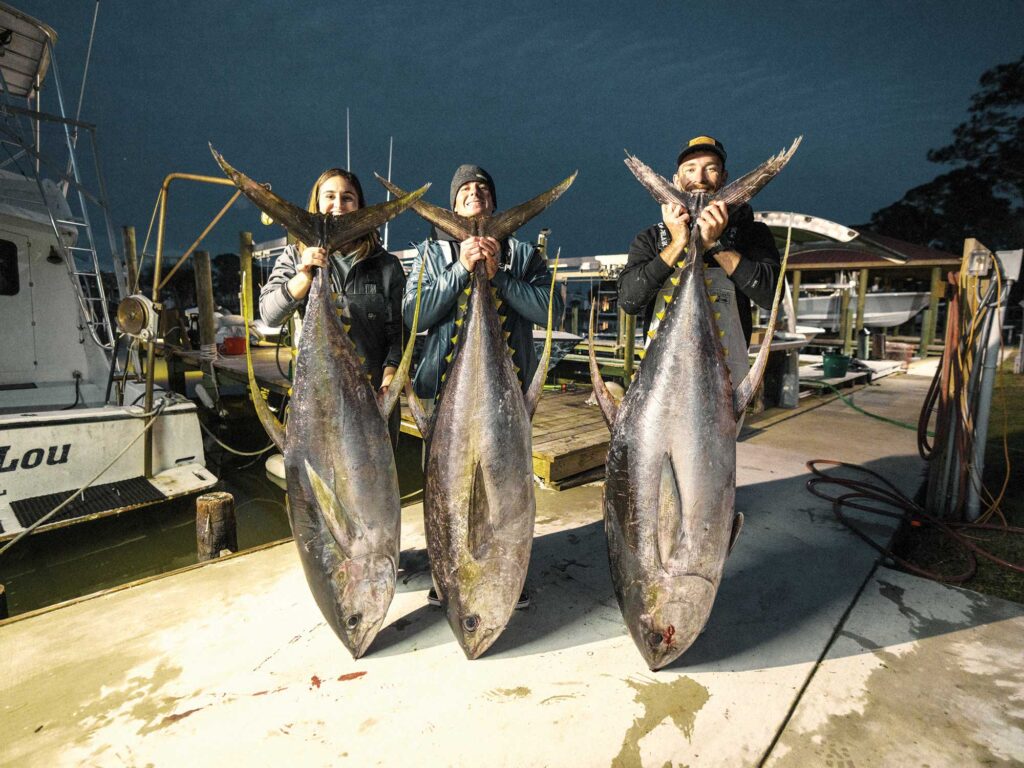
We ended our trip with three big yellowfins, hard-earned trophies of the Gulf. All told, we probably covered 450 miles over two days of serious fishing. We popped, jigged, trolled and chunked. We threw the tackle box at them. In the process, we caught countless sharks, our casting arms got a pretty good workout, and we captured some great footage. If you’re looking to tangle with some yellowfins of your own, make sure to put Dauphin Island on your list of destinations. Beyond the tuna, there’s plenty of other species ready to rumble, including a variety of snapper, grouper and jacks.
Read Next: How to Fillet a Yellowfin Tuna
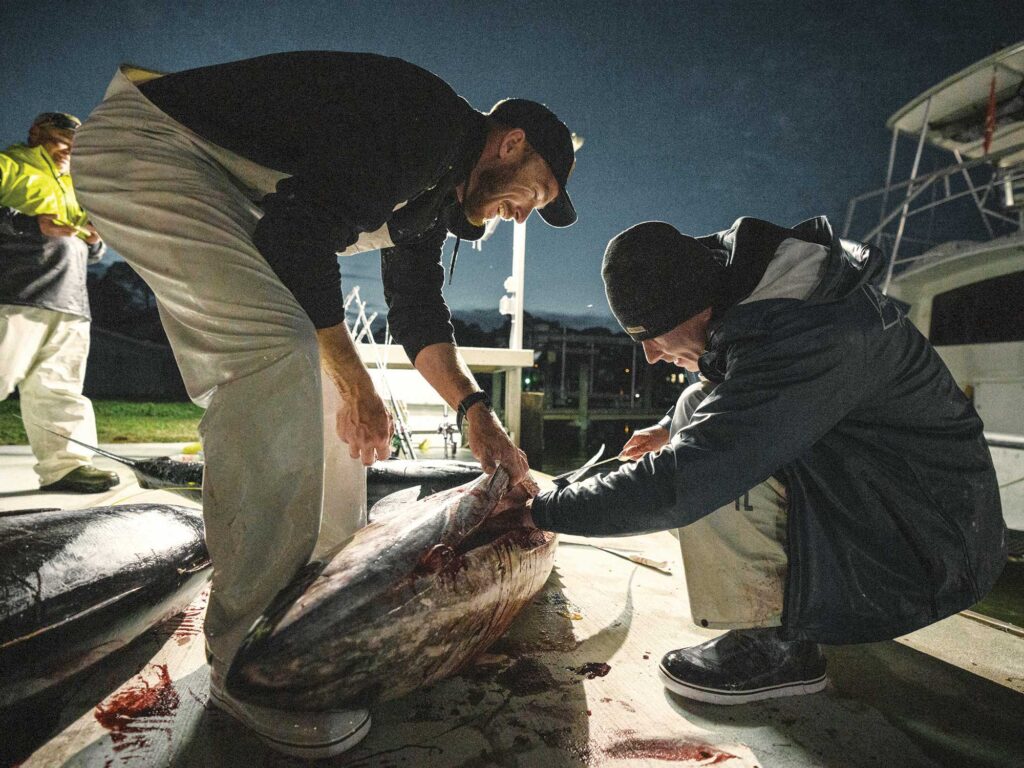
Fresh yellowfin is great nearly any way you prepare it. We wanted to ensure these were as tasty as possible, so we gutted them as soon as we got to the dock. We ended up removing the heads and tails to fit them into our coolers. They were ultimately broken down and packaged for our freezers. Prepping tuna the right way allows anglers to enjoy them for weeks after a trip—grilled, broiled, pan-fried and sashimi.





